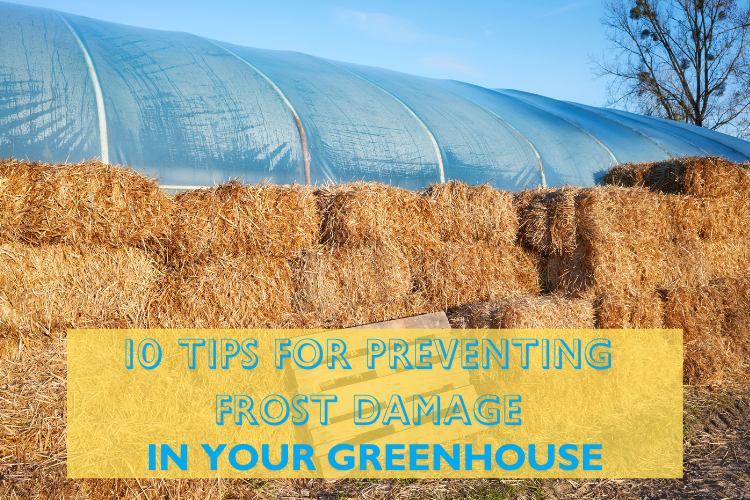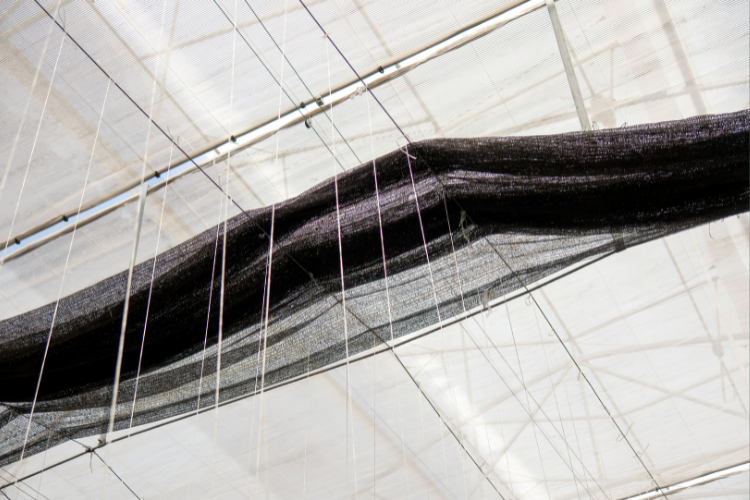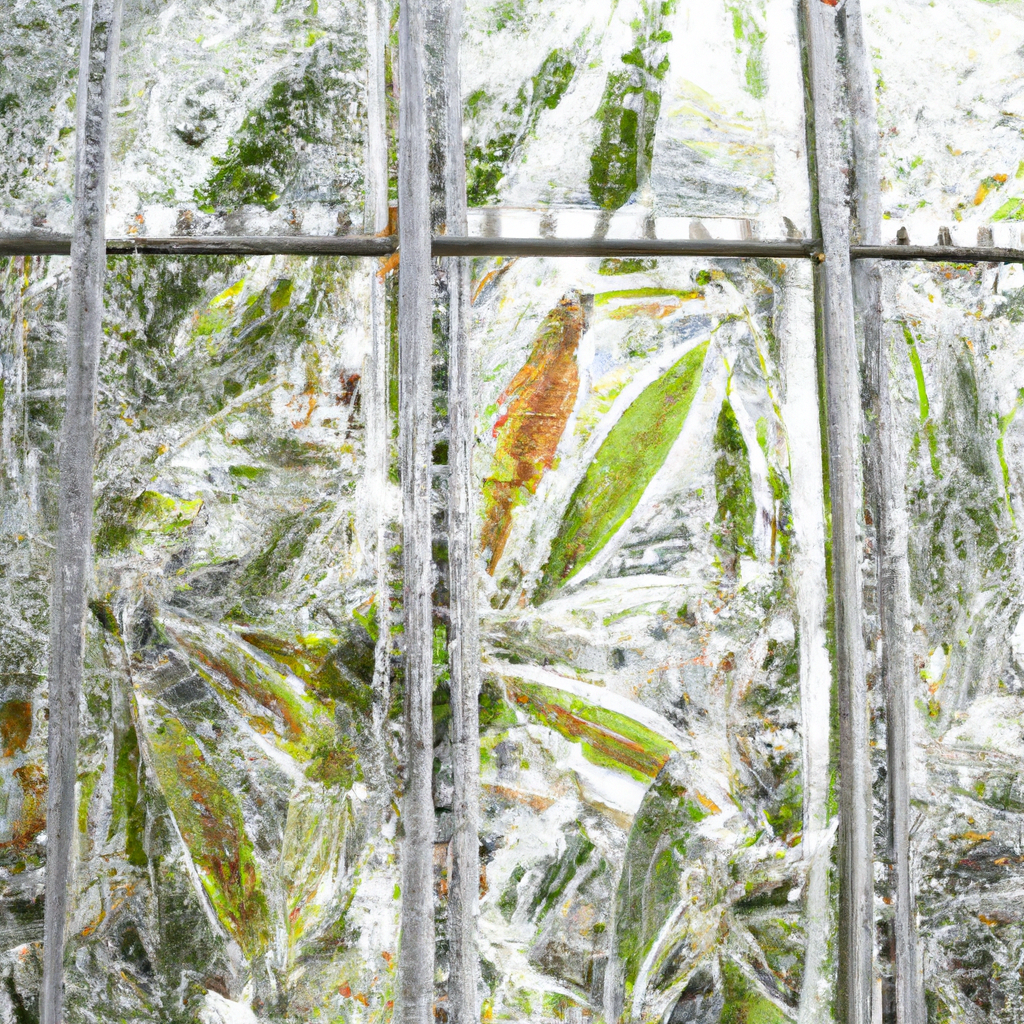
If you’re a proud greenhouse owner, you know that frost damage can be a real threat to your beloved plants. But fear not, because we’ve got you covered with these 10 essential tips to keep those frosty hazards at bay. From installing insulation to using heaters and creating air circulation, we’ll show you how to safeguard your greenhouse and ensure your plants thrive all year round. So grab your gardening gloves and let’s protect your precious plants from the frosty woes!

This image is property of images.pexels.com.
1. Maintain Proper Insulation
Insulate the greenhouse structure
Proper insulation is essential for preventing frost damage in a greenhouse. By insulating the structure, you create a barrier that helps retain heat and regulate temperature. Ensure that the walls, floor, and ceiling of your greenhouse are well-insulated to minimize heat loss.
Use bubble wrap or thermal blankets
One of the easiest and cost-effective ways to insulate your greenhouse is by using bubble wrap or thermal blankets. These materials can be placed over the walls and roof to create an additional layer of insulation. The air pockets in the bubble wrap or the insulating properties of thermal blankets help trap heat and prevent it from escaping.
Install a double-layered polyethylene covering
Another effective method to enhance insulation is by using a double-layered polyethylene covering. This involves installing two layers of polyethylene film with an air gap in between. The trapped air acts as an insulator, reducing heat loss and maintaining a more stable internal temperature.
2. Control the Temperature
Use a heating system
To combat frost damage, it is crucial to have a heating system in place. Depending on the size of your greenhouse and your specific needs, you can opt for different types of heating systems such as electric heaters, gas heaters, or radiant heating systems. The heating system should be able to maintain a consistent minimum temperature to protect your plants from frost.
Implement a ventilation system
While heating is essential, proper ventilation is equally crucial in preventing frost damage. A good ventilation system allows for the controlled exchange of indoor and outdoor air, preventing excess moisture buildup and promoting better air circulation, which helps regulate temperature and prevent frost formation. Ventilation can be achieved through vents, louvers, or exhaust fans.
Place heaters strategically
For optimal temperature control, it is important to strategically place heaters within your greenhouse. Position them in areas where heat distribution is effective, such as near plant beds or underneath benches. Placing heaters closer to the ground helps keep the lower portion of plants warmer, reducing the risk of frost damage to their delicate roots.
3. Monitor Humidity Levels
Ensure proper air circulation
Maintaining proper air circulation is crucial in controlling humidity levels and preventing excessive condensation, which can lead to frost damage. Proper air circulation can be achieved by using fans or by designing your greenhouse with vents appropriately placed to allow for the exchange of humid indoor air with drier outdoor air.
Use a dehumidifier
If you notice high humidity levels inside your greenhouse, it is important to address them promptly. Installing a dehumidifier can help regulate humidity by removing excess moisture from the air. This helps reduce the risk of frost formation and prevents the growth of mold and mildew, which can be detrimental to your plants’ health.
Avoid overwatering
Overwatering can contribute to increased humidity levels inside the greenhouse. Ensure that you are not overwatering your plants and monitor the moisture content of the soil regularly. By appropriately watering your plants, you can prevent excess moisture buildup and maintain a more balanced environment within your greenhouse.
4. Shade the Greenhouse
Use shade cloth or netting
To prevent direct sunlight from overheating your greenhouse during warmer months, consider using shade cloth or netting. These materials provide partial shading, reducing the intensity of sunlight and helping to maintain a more consistent temperature. Shade cloth or netting can also be used to protect your plants from excessive light exposure, preventing sunburn and damage.
Apply shading paint or spray
Another option to create shade in your greenhouse is by applying shading paint or spray to the exterior of the greenhouse covering. These products are specially formulated to block a certain percentage of sunlight, providing shade and reducing the risk of overheating. Shading paint or spray is a temporary solution and may need to be reapplied periodically.

5. Utilize Thermal Mass
Use water drums or barrels
Water drums or barrels can act as thermal mass inside your greenhouse. These containers can absorb and hold heat during the day when temperatures are higher and release it slowly during cooler periods, helping to maintain a more stable temperature. Place the water drums strategically around your greenhouse to maximize their heat-absorbing capabilities.
Install a geothermal system
For a more advanced solution, consider installing a geothermal system in your greenhouse. This system utilizes the stable temperature of the ground to regulate the temperature inside your greenhouse. By circulating water through underground pipes, heat can be extracted from the ground during cooler periods and used to warm the greenhouse when needed.
Consider using heat-absorbing materials
Using heat-absorbing materials, such as stone or concrete, in your greenhouse can help stabilize temperature fluctuations. These materials absorb heat during the day and release it slowly during colder periods, creating a more balanced and protected environment for your plants.
6. Optimize Plant Placement
Avoid placing susceptible plants near the walls
When arranging your plants within the greenhouse, it is important to avoid placing susceptible plants near the walls. During colder months, the walls of the greenhouse tend to be cooler than the center, increasing the risk of frost damage to plants in close proximity. Position these plants closer to the center of the greenhouse to provide them with better insulation and protection.
Position plants away from air vents or fans
While ventilation is crucial for temperature control, ensure that you do not position your plants directly in the path of air vents or fans. Direct airflow can cause temperature differentials and potentially harm your plants. Place your plants strategically, taking into consideration the airflow patterns within your greenhouse, to ensure optimum growing conditions.

7. Keep the Greenhouse Clean
Remove debris and fallen leaves
Regularly removing debris, fallen leaves, and dead plant matter from your greenhouse is essential for maintaining a healthy and frost-free environment. Decaying organic material can increase humidity levels and create a breeding ground for pests and diseases. By keeping your greenhouse clean, you reduce the risk of frost damage and promote overall plant health.
Wash the walls and roof
Dirt, dust, and algae buildup on the walls and roof of your greenhouse can reduce light transmission and hinder the efficiency of your greenhouse. Regularly wash the walls and roof using a mild detergent or a specially formulated greenhouse cleaner to ensure maximum light penetration. A clean and clear greenhouse will help your plants thrive and minimize the chances of frost damage.
Maintain a clean irrigation system
Your greenhouse’s irrigation system should be kept clean and free from any blockages or obstructions. Over time, mineral deposits and debris can accumulate in the irrigation lines, affecting water flow and distribution. Regularly inspect and clean your irrigation system to ensure proper functioning. Reliable and efficient irrigation prevents excess moisture buildup, which can contribute to frost damage.
8. Utilize Row Covers
Use floating row covers
Floating row covers are a lightweight fabric material used to cover and protect plants. These covers create a barrier between the plants and the outside environment. By placing row covers over your vulnerable plants during cold nights, you can provide an additional layer of insulation and protect them from frost damage.
Install cloche or mini-greenhouses
Cloches or mini-greenhouses are individual coverings placed over specific plants. These structures provide excellent protection against frost, creating a microclimate around the plants. Cloches can be made from glass, plastic, or even repurposed household items such as plastic bottles. By enclosing your plants in a cloche, you can safeguard them from frost and extend the growing season.

9. Consider Cold Frames
Build or purchase a cold frame
Cold frames are enclosed structures with transparent or translucent covers that capture heat and protect plants from external elements. They are typically lower to the ground and provide a controlled environment to extend the growing season. You can build your own cold frame using recycled materials or purchase pre-made ones. By utilizing a cold frame in your greenhouse, you create an additional layer of insulation and protection against frost damage.
Use straw or hay bales as insulation
When using a cold frame, consider using straw or hay bales as insulation around the perimeter. These natural materials act as a barrier against cold air, protecting the plants inside the cold frame from frost damage. The straw or hay bales also help retain heat, creating a warm and sheltered environment for your plants.

10. Protect with Thermal Screens
Install thermal screens or curtains
Thermal screens or curtains are a great addition to your greenhouse for frost protection. These screens are made of insulating material and can be lowered or raised manually or automatically to regulate temperature. By installing thermal screens or curtains, you can create a thermal barrier that helps retain heat and protect your plants from frost damage.
Utilize shade screens during winter nights
During extremely cold nights, it may be necessary to use shade screens in addition to thermal screens. These screens provide extra insulation and protection against frost by reducing the amount of heat loss. By utilizing shade screens during winter nights, you can further safeguard your plants from the damaging effects of frost.
By following these tips and implementing appropriate measures, you can prevent frost damage in your greenhouse and create an ideal environment for your plants to thrive. Remember to regularly monitor and adjust temperature, humidity, and insulation levels to ensure the continued health and well-being of your greenhouse plants. Happy gardening!


